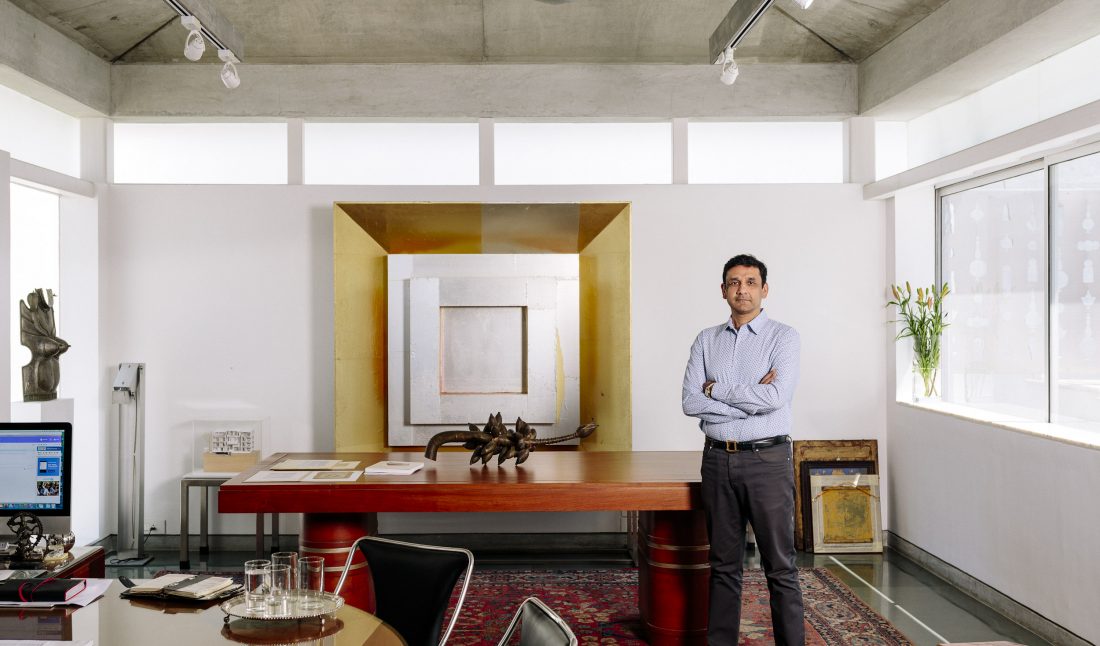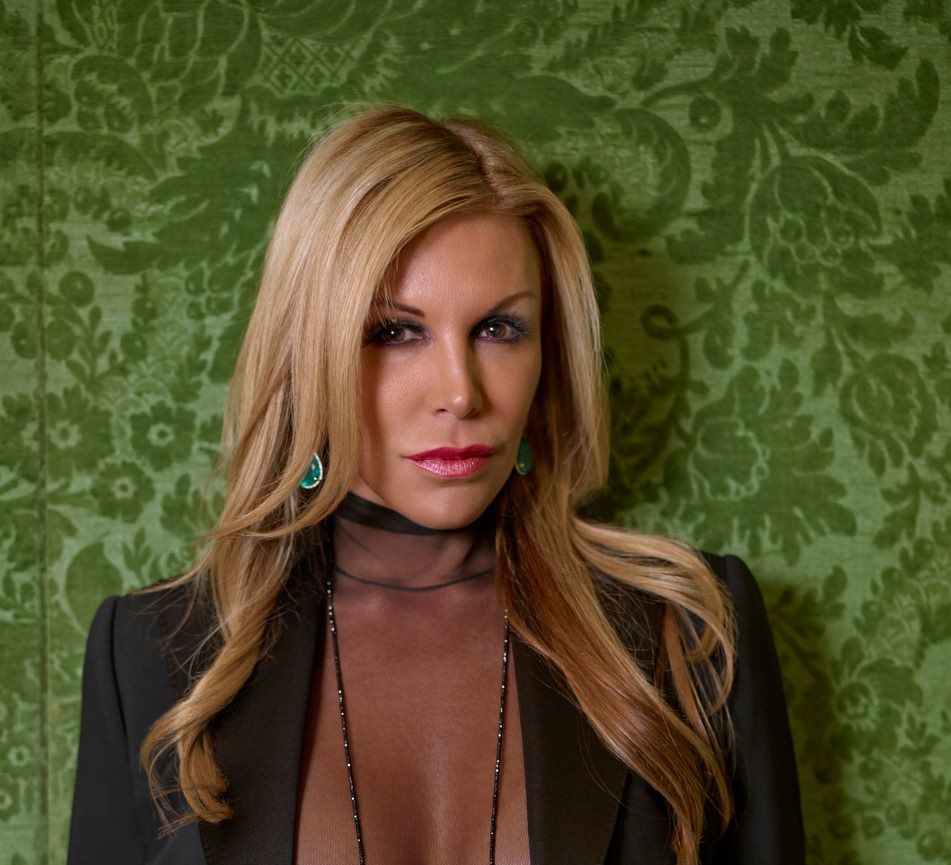The industrialist and philanthropist Abhishek Poddar is one of India’s top modern and contemporary art collectors. In addition to his work at Sua Explosives & Accessories and Matheson Bosanquet, he is a trustee of the Art & Photography Foundation, on the board of the Museum of Art & Photography in Bengaluru (set to open in 2020).
Whitewall spoke with the Poddar about the story of his collection. He grew up surrounded by art, sparking a love and interest that carried with him through school and to today. He told us about his belief in the capacity for art to change the way we view the world, and the role of museums as agents of positive change.
WHITEWALL: Where does your passion for art come from?
ABHISHEK PODDAR: I believe that even though art isn’t necessary for survival, it can inspire, motivate, provide new perspectives, and bring out the best within you, much like love. You may not feel the absence of art in your life if you’ve always lived without it, but once you have a taste, you don’t want to go back to a life without it.
I, thankfully, had the good fortune to grow up surrounded by art. Though my parents did not buy the kind of art I collect today, I believe they helped shaped my affinity for art. It was while I was studying in school however, working on a new magazine on art, that this turned into a serious interest.
WHITEWALL: What was your first purchase as an art collector?
AP: My first purchase made from my own pocket soon after I was out of school was a Jatin Das drawing.
WW: How do you see South Asian art fitting into the larger global contemporary art scene?
AP: This is a complicated question to answer. Indian art is certainly making strides in the global art stage: from an art market point of view, auction houses are selling more Indian artists and at extremely competitive prices; while from a more academic, industrial and public point of view, big museums in the West seem to finally be ready to opening their doors to Indian artists, whether the recent Bhupen Khakhar retrospective at the Tate or the Nasreen Mohamedi exhibition at the Met, and its upcoming Mrinalini Mukherjee.
We actually loaned some works for the Bhupen Khakhar show and are also loaning a work for the Mukherjee show from MAP.
That said, a lot of the international and national spotlight, in terms of contemporary art from India, remains focused on the modernist artists from the ‘60s to the ‘80s, rather than more current work. There is a much appreciated gradual shift that one sees happening in this regard however, through initiatives like the Kochi Biennale as it gains greater international recognition, or the greater inclusion of contemporary artists in project like Documenta. MAP also hopes to can contribute to this shift in helping promote Indian art and artists through international collaborations and partnerships.
WW: How would you describe your makeup collection?
AP: My collection is predominantly composed of artworks from the subcontinent and includes many works that aren’t the product of an individual maker. As far as the individual artist is concerned, there are far more Indian artists in my modern and contemporary collections, though there are relatively perhaps more European photographers than Indians in my 19th century photography holdings.
Simply because they were the first to bring, practice and promote photography in the country, and only few Indian photographers’ work survive. Bottomline, at least 90-95% of what I collect reflects either in subject, form or thought a connection to India.
WW: What would be the leading thread of the art collection?
AP: Like my ideas and understanding of art, my collection has evolved and been shaped, through personal connections that I formed with artists, curators, and art historians or academics over the years. In my early years of collecting, I was extremely fortunate to count among my friends, artists like N. S. Bender, Ram Kumar, Meera Mukherjee, M. F. Husain, S. H. Raza, and K. G. Subramanyan, among others.
I will always be indebted to them for their mentorship and patient education, and their sincere encouragement and advice when it came to guiding my unschooled eye. In the early years, I had no long term vision in sight. I simply picked up modern and contemporary artists that I loved, but soon, I began to be interested in other forms of art. At about this time, I met the curator and scholar Jyotindra Jain and he introduced me to the world of popular culture and tribal art. Martand Singh, or Mapuji as I called him, ignited in me a passion for textiles, whereas Dashrath Patel exposed me to the finer details of design.
Then I met Dayanita Singh and she got me excited about photography, and that soon became another direction I collected in. This is really the simplicity of how I built my collection—chance encounters leading me to make friends, who opened my eyes to the value of new or different fields and then trying to collect whatever I could in that area.
WW: How did you come up with the idea of creating the Museum of Art and Photography (MAP)?
AP: Around ten years or so ago, I began being approached by museums in the West who wanted to borrow art works for exhibitions, or who were looking for donations for their collections. And while this was exciting for me, as it showed Western institutions were looking more seriously at India, it also slightly bothered me. I felt uncomfortable that so much seemed to be happening outside the country, while so few museums shows were happening at home. It also bothered me that even while many Indian museums had great collections they were largely underutilized and sadly mismanaged—mostly due to a lack of funds—and I found myself most looking forward to going to museums, even exhibitions of Indian art, on trips abroad.
I realized I had the opportunity to change things, and it was with this thought in mind, that the idea of MAP was born. I also believe strongly in the capacity for art to change the way in which we view the world and the relevance of museums as agents of positive change. My childhood was certainly made special as it was enriched by art, and I hope through MAP to give back to society by providing that stimulating experience to future generations.
WW: What is the mission of MAP, set to open in 2020?
AP: The Museum of Art and Photography’s (MAP) mission is to build, manage and sustain a new museum to exhibit, interpret and preserve a growing collection of art and cultural artefacts, motivated by a belief that museums should play a positive role in society. It seeks to increase public awareness of and exposure to the arts and our cultural heritage. As a local institution with a global outlook, MAP is keenly aware of the power of art in cultural diplomacy and committed to raising the profile of Indian arts internationally, bringing international artists and experiences to India, sharing knowledge and systems to revitalize the museum landscape in the country.
With MAP, my team and I want to build a brand new museum that aims for the highest standards in all that we do. We want to build a space free from the bureaucracy which limits many of India’s cultural institutions and that becomes an integral part of the fabric the city and public life in it. This is why we’ve chosen a central location for the physical site of the museum.
As for the reaction of people, it may be true that we don’t already have a museum going culture in India, but that isn’t because we lack interested audiences—it is because we don’t have proper institutional programming in place. We want to change that at MAP, and bring art to more people, to make it educational and accessible, fun, interesting and exciting, and to present the museum as a viable alternative to the mall. And thereafter, by example, to bring about a change in the entire museum-going culture in the country by working with other museums, as well. Already I am delighted to see how many people are stepping up to support, appreciate and recognize us, in ways both big and small.
WW: How are you planning to increase access to art with MAP?
AP: To make art more accessible is one of the central facets of MAP’s mission. To this end, we have a significant focus on digitization, and plan eventually have our entire collection up and available for viewing online. This will, of course, allow anyone with an Internet connection anywhere in the world to take pleasure in the works we have.
Another key aspect of MAP’s mission is education and outreach; and through its education and outreach programs MAP will reach a range of audiences, from school children to families, facilitating greater access to art. MAP’s educational and outreach programming , as well as policies of ticketing, will also be structured keeping in mind the necessity of ensuring that varied socio-economic group receive access to the museum experience.
Lastly, MAP is also committed to increasing the profile of Indian art and artists internationally, through building partnerships with museums and institutions across the world and promoting works and artists from its own collections, setting up international exhibitions etc.
At present, the building constructions is well underway and on schedule to open the public at 2020. In the meantime MAP, aiming to be a museum not limited by walls, has been actively reaching out audiences through it education, loans, and other collaborative programmes.











